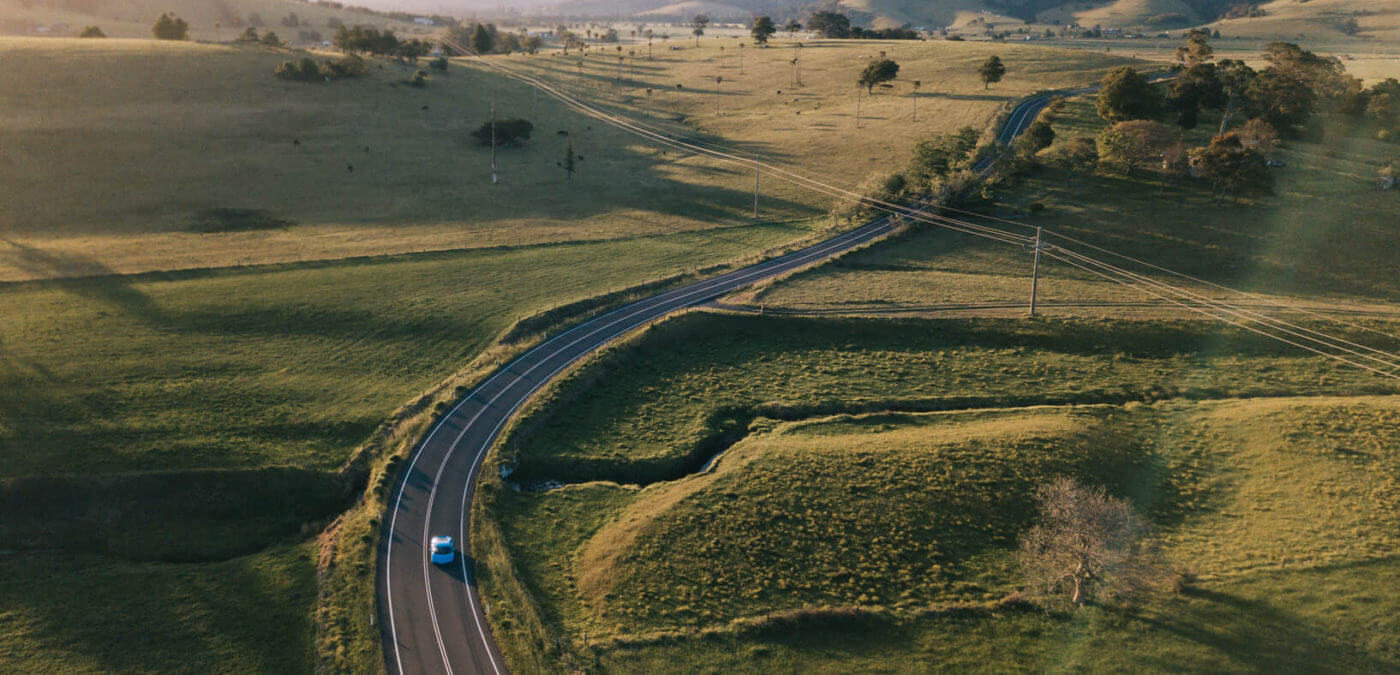-
what we do
We are here to empower you to live your best possible life through comprehensive financial advice. We do this by getting to know you and what is most important to you and developing a strategy tailored to your unique situation.
- Financial Planning
- Wealth Management
- Lending
- Wealth Protection
-
about us
Invest Blue has a number of offices conveniently located in rural, coastal and city locations across QLD, NSW, ACT, TAS and VIC. All of our offices are supported by an operations team of technical advice, research, client experience, compliance and IT specialists.
-
financial education
Explore a range of topics to broaden your financial knowledge and access useful tools and resources to help you get a better understanding of your financial position and where you have the opportunity to make improvements.
- Knowledge Centre
- Calculators
- Our Updates
- Book here
- Login
-
It's possible
understanding with invest blue

The cost of caution when funding your retirement
How much can too much, or too little caution cost you in the long run?
How are we doing funding our own retirements? Do we have enough? Have we considered the right level of risk at the right time?
The cost of caution is about taking on the right amount of risk at the right time. Here we explore this within the context funding your retirement.
Each year, the percentage of Australians able to retire fully or partially funded grows[1]. This is largely due to the success of our superannuation policy (forced savings) as well as the result of asset values being relatively high in recent years.
Superannuation is one way to fund retirement, however, what are the different kinds of ways to fund your retirement and how do you know which will provide the most favourable returns for you?
How do risk and caution play out in this decision-making? One of the rules of caution is not to be too cautious.
Are you looking towards the future however aren’t sure how to finance it? Talk to us today about how to structure a financial plan that starts with your dreams and goals.
The ASFA Retirement Standard
The Association of Superannuation Funds of Australia (ASFA) releases a Retirement Standard each quarter, that identifies how much Australian singles and couples need to live a comfortable vs modest retirement lifestyle.
The latest standard revealed the average Australian single needs $875,740 for 20 years of comfortable retirement from aged 65 to 85, and couples need $1,235,720. This is $43,787 and $61,786 per year respectively. For a modest retirement, this drops to $27,913 and $40,194 per year respectively. We know that many Australians don’t have enough to meet this standard themselves, and will choose to supplement their income with investment income or the pension.
Moving into retirement is a critical time when financial advice can really help and we have helped hundreds of clients approaching retirement with their unique needs. Our Advisers can help you map out the kind of retirement lifestyle you are wanting to have, and look at how you are going to fund your retirement. Contact an Adviser today.
How many Australians are accessing the Aged Pension?
A recent study by Challenger Retirement Income Research reveals that as of 2018 only 25% of new retirees are now relying solely on the Age Pension for income, with 45% receiving partial payment. This compares to 80% of those over 80 receiving a partial payment[2]. Whilst this information shows that the superannuation system is working to reduce reliance on the Age Pension, the majority of eligible Australians will access it. Reliance on the Age Pension does bring with it limited flexibility with how you can spend your time and live out your golden years. Have you thought about how you will fund your retirement?

Have you thought about how you will fund your golden years?
According to the research, the super balance of a typical couple entering retirement is $400,000. Although this figure is below the projected figure to retire comfortably, it does show we’re making progress towards Australians being self-funded in retirement.
Given 55% of Australians are funding their own retirement-aged 66, let’s now take a look at the other ways that Australians are funding their retirement aside from superannuation.
Types of Retirement Funding
Here we look at some of the alternatives:
- Interest on cash in the bank: This is definitely the most conservative type of retirement funding, especially after recent cuts by the RBA to the cash rate. As of November 2019, the average term deposit rate is sitting between 1.5-2%[3].
- Rental incomes: if you’ve managed to pay off most of your mortgage or better yet completely paid off one or more houses before retirement, living off rental income from these properties could be a great way to fund your retirement.
- Shares/Investments: If you are prepared to wait for your return on investment, shares can be a great investment option. The 2019 Vanguard Index Chart reveals Australian shares have averaged a return of 9.4% growth per annum[4]. The indicated $10,000 invested in Australian Shares in 1989 (30 years ago) is now worth $146,337. You can view the full report here.
- One thing to note is that shares are considered long-term investments. You can read more about this in our recent Market Update.
- Pension: If you are over the age of 65 you may be entitled to Age Pension payments from the Australian government. Age Pension payments vary depending on whether you are single or with a partner, your income and if you have assets owned fully or partially. This service also provides rental assistance and pension cards for qualifying Australian residents. The Maximum basic rate is $641 each per fortnight as a couple and $850.40 as a single. That is $16,666 per year each for a couple and $22,110 for a single. If this is not enough for you, you will need to look at other ways to supplement your income.
- Superannuation: When you reach the preservation age you can access your super tax-free. This is between 55 and 60 depending on what year you were born. Depending on what your retirement plan is, you may decide to access your super in one lump sum or receive regular payments that act as an income stream. These payments can be received fortnightly, monthly, quarterly, half-yearly or yearly. Payments in full can be dangerous and it is a good idea to put a plan in place with a Financial Adviser for how you are going to manage your money so that you don’t find yourself in a situation where your money runs out.
You can read more on ways to invest here.

There are different ways to fund an enjoyable retirement.
Returns on each income source listed above vary, and it is a good idea to consider your investment options within the context of your dreams and goals and how much money you think you will need.
In many cases you may find an individual uses a combination of income streams, for example, John and Jill own a home outright which they live in, they have rental income from a second home and also rely on superannuation payments and some interest off money in the bank.
It is important to consider how much income you think you will need in your retirement, so you can maximise the use of your income in your working years and reduce or remove reliance on the Age Pension.
Contact an Adviser today about how we can help you plan for your retirement years. You can read some of our Client Stories about living life in retirement here.
What is the cost of caution?
Deciding which investment is right for you comes down to three things: your risk profile, your money mindset and your needs. This is also where the cost of caution comes into play. Being too cautious, for example, choosing to keep you’re your cash in a long-term deposit account, could create a difference of thousands when it comes time to retire.
Our investment philosophy is founded on the principle that investors should take the appropriate risk for their situation. In the early years of investing this may mean putting money into ‘growth‘ type assets that can be more volatile, but that has a larger return over time. Then as you age and your investment horizon shrinks, it could be prudent to phase your investments into less risky assets.
It is not easy to decide on how to best invest your money, and a recent study from the Australian Securities & Investments Commission (ASIC) reveals that 45% of Australians are looking for help with investments[5].
ASIC’s Moneysmart provides some guidance regarding short, medium and long-term investments, including the risk, volatility and expected return for each.
How do you feel about risk and caution?
Everyone has their own inherent comfort level with risk. With shares, for example, there can be highs and lows, so one approach is to consider how much you can handle, captured well in the phrase “if you don’t like the heat, get out of the kitchen”!
For some, witnessing what their parents did with money may drive them to want to replicate or reject that path. Our own personal experiences also impact future decisions. For example, if we made a bad call on a share investment, we may want to avoid investing in shares in the future or at least using the same strategy.
More broadly speaking, some of us are just bigger risk-takers, less afraid of consequence and driven by opportunity; while others couldn’t think of anything worse than worrying about an outcome. All of this is perfectly human and understandable, but it might not be the best way to build an investment strategy that will form your future income.
We believe firmly that no investor should take on risk they don’t need to. Our investment philosophy guides our advice to clients with the aim to maximise the probability of our clients meeting their objectives, whilst ensuring we implement a strategy that is consistent with their tolerance towards risk.
Let’s take an extreme example to make the point. If you wanted to avoid the market altogether, be it the investment market or real estate, you could squirrel your hard-earned cash away under the mattress. Your dollar earned today would be safe and secure for tomorrow, but it would still be worth a dollar. Over time, with inflation, it will actually buy you less than $1 when it comes time to need it.
How an adviser can help
Some of our clients come to us with a large risk appetite, willing to put money on the line for risky ventures or the promise of big returns. That is all well and good if you are prepared to lose it. Our job with those clients is to work out what they need and then what they have spare to take on that kind of risk.
We also work with clients, however, who are afraid of dipping their toe in the investment market for fear of what it might do. The 2008 Global Financial Crisis is a good case in point! For these clients, however, we again to map out what they need and ensure they are taking enough risk to get there.
While there are never guarantees in life or investment; there is experience, credibility and research to back. In all situations, we take action that a client is comfortable with. Sometimes, a bit of education, modelling and clarity can help someone to refocus their risk lens. You can read our article on “Does your future feel better than your past” for additional insight.
Financial Advice is only a phone call away. Set yourself on a path to financial freedom. Contact us or ask us a question today.
[1] https://www.afr.com/policy/tax-and-super/the-average-retiree-is-now-self-funded-20190625-p52121
[2] https://www.challenger.com.au/-/media/Challenger/Documents/Reports/37693-Update-on-balances-paper-2019-FINAL.pdf
[3] https://www.finder.com.au/term-deposits
[4] https://static.vgcontent.info/crp/intl/auw/docs/resources/2019_index_chart.pdf?20190730|193023
[5] https://www.investblue.com.au/investment-philosophy
What you need to know
This information is provided by Invest Blue Pty Ltd (ABN 91 100 874 744). The information contained in this article is of general nature only and does not take into account the objectives, financial situation or needs of any particular person. Therefore, before making any decision, you should consider the appropriateness of the advice with regards to those matters and seek personal financial, tax and/or legal advice prior to acting on this information. Read our Financial Services Guide for information about our services, including the fees and other benefits that AMP companies and their representatives may receive in relations to products and services provided to you.
You may also like













